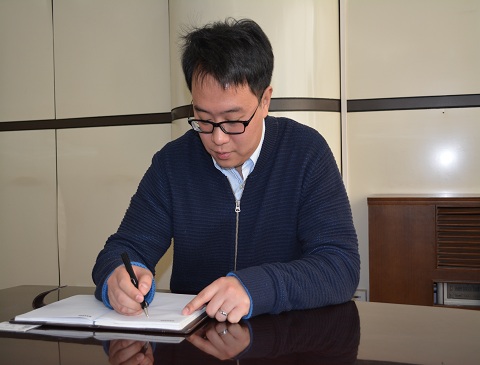为太阳能项目融资所进行的先进资源评估
发布时间:2013-07-31
编辑:haoshiguang
本文摘要: 为大规模的太阳能项目融资所进行的先进资源评估 年际的资源变化对电场发电有显著的影响。尽管, 以往常见的方法是通过获得典型气...
为大规模的太阳能项目融资所进行的先进资源评估
年际的资源变化对电场发电有显著的影响。尽管, 以往常见的方法是通过获得典型气象年的资源数据,进行发电量计算。但投融资机构开始要求使用长期资源记录,以把握因资源变化而带来的对发电量的影响。这对于大规模的太阳能电站设计建设尤为重要。
一旦太阳项目的以确定,更深入的分析,更好地量化太阳能资源的长期可用性,从事项目的技术方面设计,并确保施工的前期资本,将成为项目发展的重要工作。与会者将了解采取什么措施,以减少与太阳能资源相关的不确定性。以便提高项目获得资金的机会及长期发展能力……
作者:
Pascal Storck
Chief Operating Officer
3TIER
亚太区负责人:
张大为
Tel:139 108 48320
Email:dzhang@3tier.com
----------------------------------------------------------------------------------------------------------
Title: Resource Assessment For Financing Utility Scale Solar Projects
Learning Objectives:
Once a promising site for solar development is identified, a more in-depth analysis is required to better quantify the long-term availability of the solar resource, to design technical aspects of the project, and to secure the upfront capital for construction. Attendees will learn what steps to take to reduce the uncertainty associated with the solar resource. This improve their project's chances of getting financed and their long-term viability.
Summary:
Interannual resource variability has a significant impact on annual energy production. While in the past it has been common practice to use Typical Meteorological Year resource data to produce energy estimates, financial institutions are starting to require long-term resource records be used in order to capture the effects of resource variability on energy production. This is particularly true for utility scale installations.
Many financial and rating institutions, as well as internal certification organizations, require 1-year P90 values to assess the economic feasibility of a project. A 1-year P90 value indicates the production value that the annual solar resource will exceed 90% of the time. The only way of determining this value acceptable to funding institutions is with long-term continuous data at the proposed site at least 10 years in length.
Surface observations can provide very accurate measurements of solar radiation, but few developers will wait the 10+ years required to develop a 1-year P90 value. Satellite derived irradiance values can accurately provide a long-term, time series of data without the expense and wait but it cannot always capture the micro-scale features that affect a site. Therefore a combination of short-term ground measurements and long-term satellite derived irradiance values is ideal for assessing resource variability and project risk.
We will present methods for significantly reducing production estimation errors and bias by statistically correcting satellite data using available short-term surface observations. Accurate estimates mean more confident financial planning and investment and improved chances of commercial success for solar installations.
Presenting Author
Pascal Storck
Chief Operating Officer
3TIER
2001 6th Ave
Suite 2100
Seattle, WA 98121
Phone Number: 206-708-8470
Email: pstorck@3tier.com -- Will not be published
Biographical Sketch: Dr. Storck serves as 3TIER's COO, has been with the company since its inception, and has led many of its business and functional groups throughout his tenure. Dr. Storck is an internationally recognized expert on the topics of renewable energy assessment and forecasting. His background in systems analysis, optimization, and hydrologic sciences has played an integral role in the development and implementation of 3TIER's unique range of wind, hydro, and solar products. Dr. Storck holds a Bachelor degree with distinction in Environmental Engineering from Cornell University, a Master's degree in Civil and Environmental Engineering from the University of Illinois at Urbana-Champaign, and a PhD in Civil and Environmental Engineering from the University of Washington, where he was also named a NASA Earth Systems Fellow.
专题报道
- 第九届中国(无锡)国际新能源大会
-
 本届新能源大会以“新城镇、新能源、新生活”为主题,举办2017全球新能源产业峰会及“光伏+”跨界、绿色建筑、分布式市场营销等10场专业论坛,国家能源局新能源和可再生能源司...
本届新能源大会以“新城镇、新能源、新生活”为主题,举办2017全球新能源产业峰会及“光伏+”跨界、绿色建筑、分布式市场营销等10场专业论坛,国家能源局新能源和可再生能源司...














